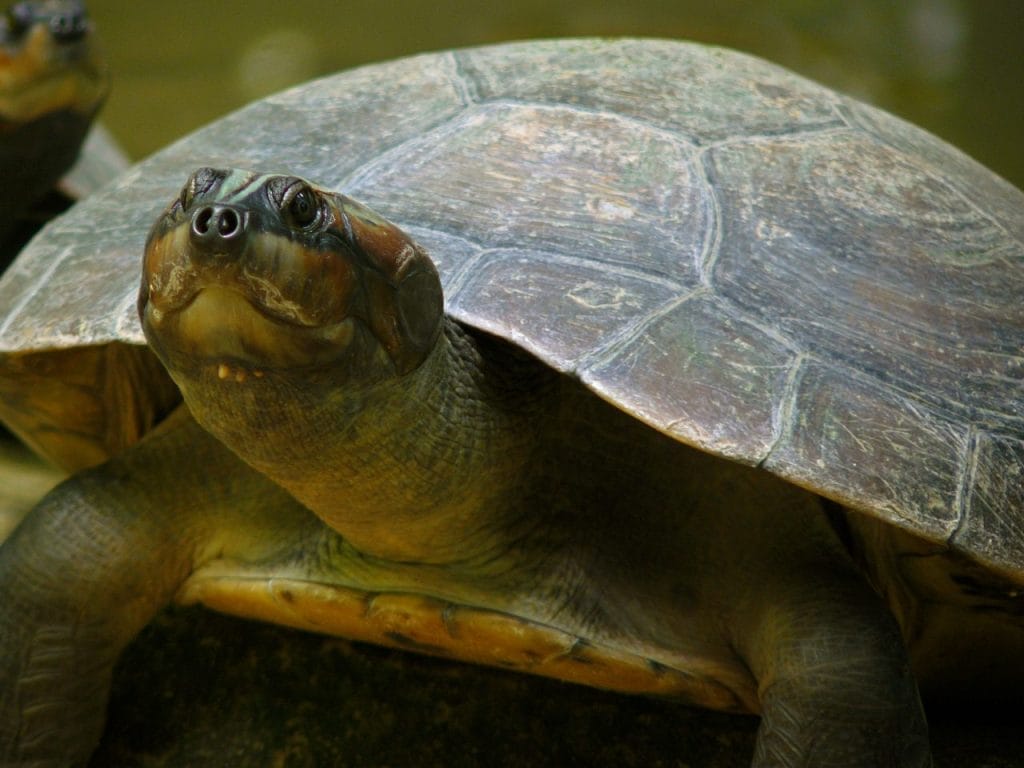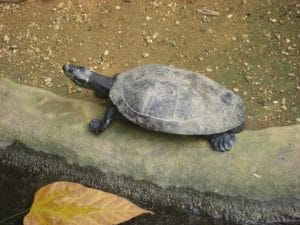Podocnemis expansa (Arrau turtle)
Home > Turtle Database > Podocnemis expansa (Arrau turtle)

The Arrau turtle, Podocnemis expansa, is one of the largest freshwater turtles in the world. It’s found in South America’s major river systems and is famous for its synchronized mass nesting events known as arribadas.
Native To These Regions
Acre (Brazil), Amapá (Brazil), Amazonas (Brazil), Amazonas (Venezuela), Beni (Bolivia), Bolívar (Venezuela), Guainía (Colombia), Guaviare (Colombia), Loreto (Peru), Madre de Dios (Peru), Pando (Bolivia), Pará (Brazil), Rondônia (Brazil), Roraima (Brazil), Ucayali (Peru), Vichada (Colombia)Native Turtle Species Map – Find Turtles by Region
Scientific Classification
Kingdom: Animalia
Phylum: Chordata
Class: Reptilia
Order: Testudines
Family: Podocnemididae
Genus: Podocnemis
Species: Podocnemis expansa
Common Names
Arrau turtle
Giant South American river turtle
Charapa (locally in some regions)
This Hilarious Turtle Book Might Know Your Pet Better Than You Do
Let’s be real—most turtle care guides feel like reading a textbook written by a sleep-deprived zookeeper.
This one’s not that.
Told from the snarky point of view of a grumpy, judgmental turtle, 21 Turtle Truths You’ll Never Read in a Care Guide is packed with sarcasm, sass, and surprisingly useful insights.
And hey—you don’t have to commit to the whole thing just yet.
Grab 2 free truths from the ebook and get a taste of what your turtle really thinks about your setup, your food choices, and that weird plastic palm tree.
It’s funny, it’s honest, and if you’ve ever owned a turtle who glares at you like you’re the problem—you’ll feel seen.
Identification
Description
Adult Arrau turtles have broad, smooth, and flattened carapaces that can grow over 80 cm in length. The color ranges from dark brown to olive, and their limbs are strong and paddle-like for swimming.
Sexual Dimorphism
Females are much larger than males. Males have longer, thicker tails and a slightly more curved plastron.
Check more turtles from the Podocnemis genus
Native Origin and Distribution
Geographical Range
Native to the Amazon, Orinoco, and Essequibo River basins. Found in countries like Brazil, Colombia, Venezuela, Peru, Ecuador, and Bolivia.
Preferred Habitat
They live in large slow-moving rivers, oxbow lakes, and flooded forests. During nesting season, they migrate to sandy beaches along the riverbanks.
Behavior
Feeding Habits
They are mostly herbivorous, feeding on aquatic plants, fruits, and algae. Occasionally they may eat small invertebrates.
Predators
Eggs and hatchlings are preyed upon by birds, fish, caimans, and humans. Adults have few natural predators.
Reproduction
Breeding Season
Breeding usually takes place during the dry season. Nesting often happens between September and December, depending on the region.
Reproductive Method
Females lay up to 100 eggs in sandy nests. Multiple females gather in large groups for nesting, which is a rare behavior among turtles.
Conservation
Extinction Status
Classified as Vulnerable by the IUCN.
Threats
Overharvesting of eggs and adults, habitat destruction, pollution, and illegal trade.
Conservation Measures
Protected areas, egg harvesting bans, nest monitoring, community education programs, and rescue operations have been set up to aid recovery.
Economic Importance
The species has been hunted for its meat and eggs for centuries. In some regions, it’s still a part of traditional diets and local trade, although now mostly illegal or regulated.
Interesting Facts
Arrau turtles are known to communicate vocally, especially during hatching and migration.
They travel hundreds of kilometers to reach nesting sites.
The synchronized nesting (arribada) is a rare behavior among freshwater turtles and draws attention from researchers and conservationists worldwide.

About Author
Muntaseer Rahman started keeping pet turtles back in 2013. He also owns the largest Turtle & Tortoise Facebook community in Bangladesh. These days he is mostly active on Facebook.














